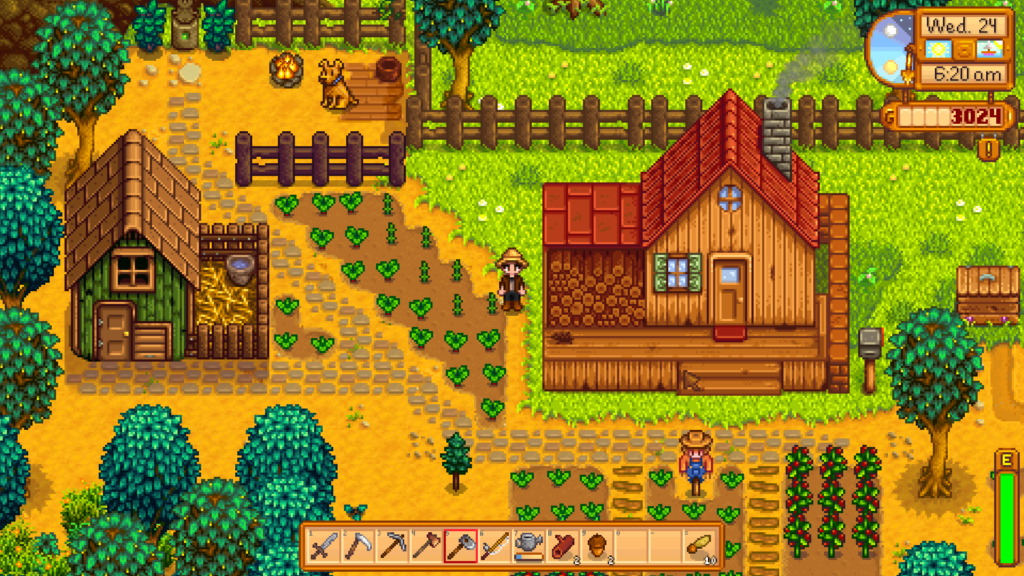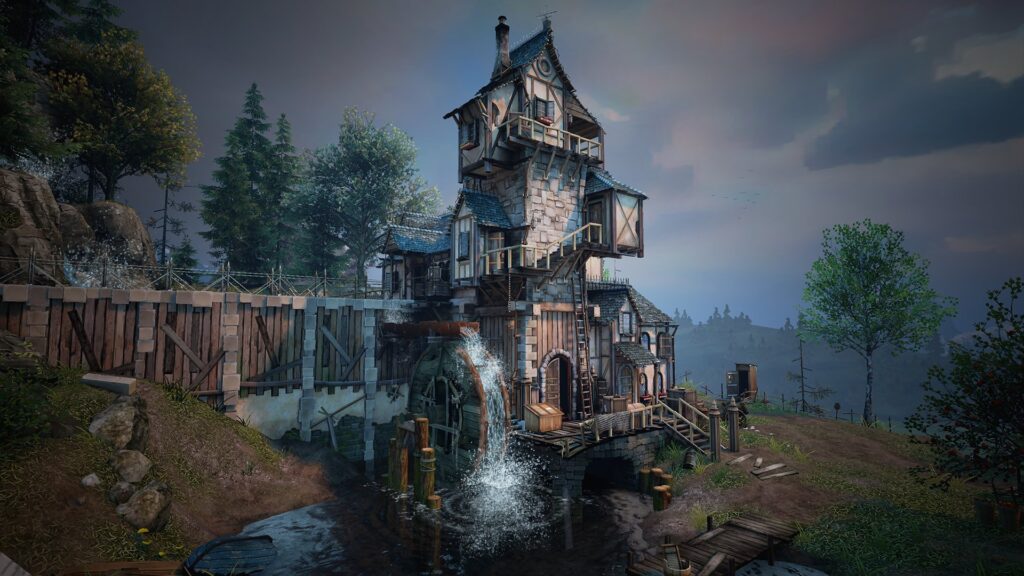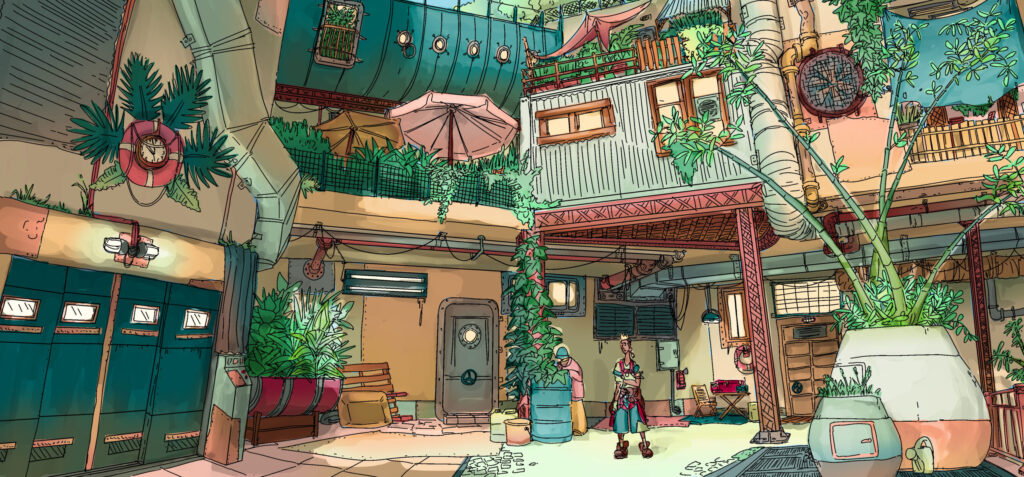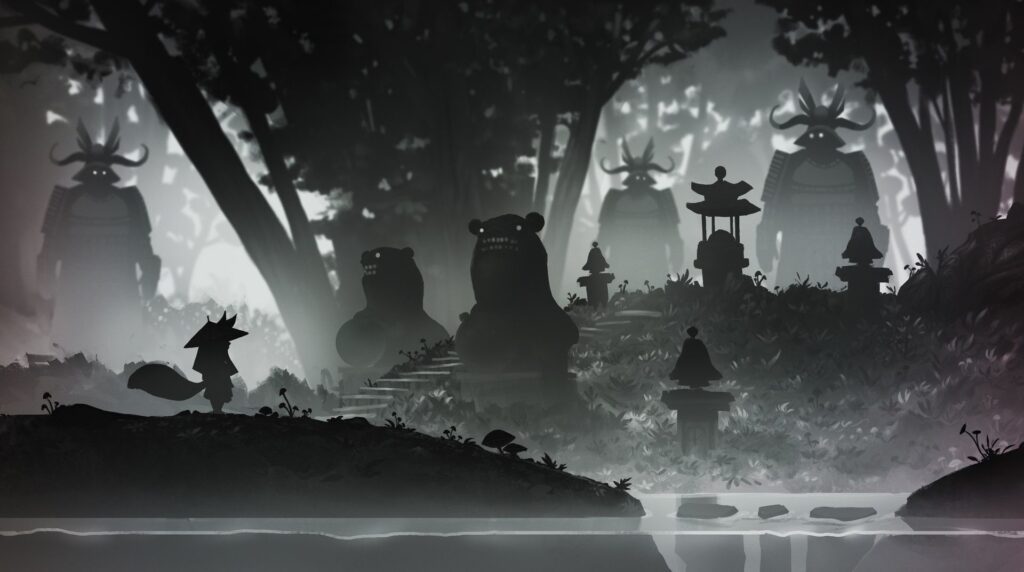Welcome to the exciting world of 2D game environment design for beginners! Here, you’ll embark on a journey to create stunning and immersive landscapes, dungeons, cities, and everything in between for your 2D games. Whether you’re a budding artist or a coding enthusiast with a creative itch, 2D game environment design offers a rewarding way to bring your game ideas to life.
Keep reading to learn all you need to know about this prospective area!
And don’t miss: Maya vs Blender – How to choose the right 3D software
2D game environment design for beginners: understanding the basics
Let’s establish a solid foundation before diving headfirst into creating breathtaking environments. 2D game environment design, as the name suggests, involves crafting visual backdrops and interactive elements that players navigate within your game. It’s the stage where your characters come alive, stories unfold, and gameplay mechanics take center stage.

A well-designed 2D game environment serves two primary purposes:
1 – Aesthetics
It sets the mood, tone, and visual style of your game. Think about the vibrant jungles of a platformer or the dark, ominous caves of a horror game. The environment visually communicates the experience you want players to have.
2 – Functionality
It provides a space for players to interact with the game world. This includes elements like platforms to jump on, doors to open, and obstacles to avoid. A good 2D game environment design balances aesthetics with functionality, ensuring a smooth and engaging gameplay experience.
Essential steps in 2D game environment design for beginners
Now that you grasp the core purpose of 2D game environment design, let’s explore the key steps involved in crafting your first masterpiece:
Concept and Planning
This initial stage involves brainstorming ideas for your environment. Sketch rough concepts, define the mood and theme, and determine the functionalities needed to support your game’s mechanics. Consider factors like level size, color palettes, and the overall layout.
2D game environment design for beginners benefits from inspiration – so you should research existing games and concept art online. Platforms like Pinterest and ArtStation are treasure troves for sparking your creativity!
Choosing Your Tools
The tools you use depend on your artistic comfort level and the desired level of detail. Here are some popular options:
- Digital Art Software: Programs like Adobe Photoshop, Clip Studio Paint, and Aseprite offer a wide range of brushes, textures, and tools for creating detailed environments.
- Game Engines: Some game engines, like Unity and Unreal Engine, come with built-in level editors that allow for creating environments directly within the development software.
- Pixel Art Software: If you’re aiming for a retro aesthetic, pixel art software like Aseprite or Pyxel Edit provides a pixel-perfect environment for crafting charming, low-resolution worlds.
Building the Environment
This is where the magic happens! Start with the background, laying down the foundation for your world. Use shapes, textures, and colors to establish the overall feel.

For 2D game environment design for beginners, it’s helpful to break down the environment into smaller components. Design individual elements like trees, buildings, or props first, and then assemble them into a cohesive scene.
Adding Depth and Detail
Once the basic structure is in place, add depth and detail. This can involve layering elements, incorporating lighting effects, and using visual cues to guide the player’s eye. Experiment with shadows, highlights, and perspective to create a sense of space and dimension within your 2D environment.
Playtesting and Iteration
Don’t underestimate the power of playtesting! As you create your 2D game environment, gather feedback from others, especially potential players. Observe how they interact with the environment, identify confusing areas, and iterate on your design based on their feedback.
This process of playtesting and refining forms a crucial part of 2D game environment design for beginners. It ensures your environment not only looks beautiful but also functions well within the context of your game.
Read as well: Core principles of animation in video games
Essential tips for 2D game environment design beginners
Delving into the world of 2D game environment design is akin to embarking on an exhilarating journey waiting to be discovered! To ensure a seamless initiation into this realm, here are some invaluable tips to guide you along your path:
- Start with a modest scope, yet let your imagination soar! Avoid overwhelming yourself with overly intricate environments right from the outset. Begin with compact levels that you can gradually expand and enrich as you hone your skills.
- Readability reigns supreme. Your environment must possess clarity and accessibility for players. They should swiftly discern the layout, identify interactive elements, and anticipate potential hazards.
- Harness the power of repetition judiciously. While employing recurring elements can be efficient, you must guard against monotony. Develop a core set of assets such as trees or rocks, then introduce subtle variations to maintain visual allure.
- Leverage premade assets to expedite your design process. Particularly when starting, embrace the assistance of pre-made resources. Numerous outlets offer royalty-free tilesets, sprites, and other elements to kickstart your creative endeavors.
- Unleash the potential of color theory. Proficiency in color theory can significantly elevate the visual allure of your environment. Employ complementary colors to foster contrast and direct the player’s gaze. Deploy warm hues for dynamic locales and cool tones for serene areas.
- Illuminate your world! Thoughtful lighting choices set the ambiance and imbue your environment with depth. Experiment with diverse light sources like sunlight, torches, or luminescent crystals to infuse a sense of realism and atmosphere.
- Pay heed to the foreground. While backgrounds hold importance, do not overlook the foreground. Incorporate elements such as foliage, fences, or interactive objects to augment depth and furnish players with additional insights into the game world.
- Practice breeds perfection. Like any skill, proficiency in 2D game environment design thrives on consistent practice. The more environments you craft, the more adept and self-assured you’ll become with the tools and methodologies. By adhering to these guidelines, you’ll be well-equipped to craft captivating and functional 2D game environments that breathe life into your game concepts!

Bonus Tip: As you delve deeper into 2D game environment design, consider exploring different art styles. Experiment with pixel art, vector graphics, or even hand-drawn environments to discover your artistic voice and create visually unique game worlds.
Exploring advanced concepts in 2D game environment design for beginners
As you progress in your 2D game environment design journey, consider exploring these advanced concepts to elevate your environments:
Parallax Scrolling
This technique creates a sense of depth by moving background elements at different speeds compared to the foreground. It adds dynamism and realism to your game environments.
Tiling Textures
Utilize tiling textures to create seamless backgrounds and repetitive patterns like brick walls or grassy plains. This approach saves time and resources while maintaining visual consistency.
Animation
Adding animations to specific elements within your environment can breathe life into your world. Animated doors, flickering torches, or flowing water can significantly enhance the player’s immersion.
Interactive Elements
2D game environment design for beginners can focus on basic platforms and obstacles. As your skills develop, introduce more complex interactive elements like puzzles, levers, and hidden secrets to create a more engaging gameplay experience.

The enchanting world of 2D game environment design awaits you
With dedication, practice, and the valuable tips outlined above, you’ll be well on your way to crafting stunning and functional environments that bring your game ideas to life. The journey itself is a rewarding experience.
With this comprehensive guide as your starting point, you can embark on your exciting adventure into the world of 2D game environment design for beginners. Remember: the only limit is your imagination!
If you wish to start your journey in environment design for video games, you have come to the right place. Main Leaf is here to help you turn your game concept into reality. We offer fast turnaround times – you’ll get a quote within 24 hours of submitting your request. So contact Main Leaf today and embark on your journey into the world of video game development!

